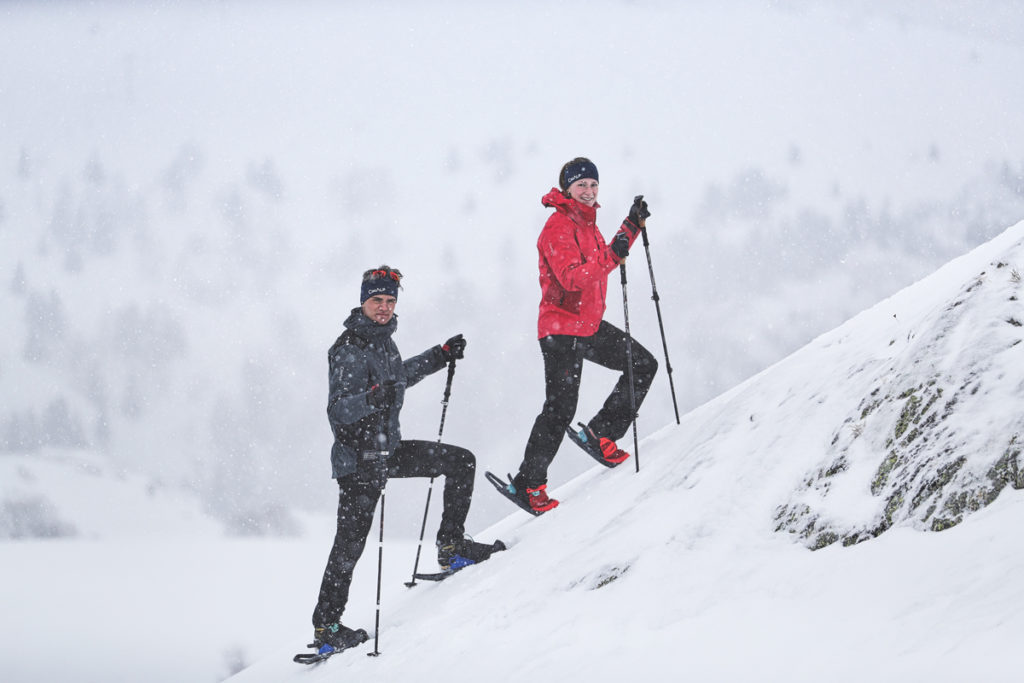How to dress for snowshoeing?
Snowshoeing is the perfect activity to recharge your batteries in winter. It allows you to continue hiking when there is snow. When choosing your outfit, the best thing to do is to adopt the three-layer technique and to modulate the heat input according to the effort. To understand this system, we explain how to dress for snowshoeing in winter.

Dressing the upper body
Snowshoeing is generally done when the temperature is close to 0°C. Your first layer can consist of a synthetic fibre t-shirt which absorbs and evacuates perspiration efficiently. In very cold weather, a long-sleeved Merino wool shirt will provide more warmth.
A micro-fleece or fleece is a perfect second layer. It is warmer than a classic jumper, is more or less thick depending on the temperature and can be removed and put back on very easily when fully zipped. For more freedom of movement, you can also choose a sleeveless fleece.
Finally, a waterproof and windproof third layer is ideal. Choose a Gore-Tex® jacket or equivalent membrane. This will protect you from snow, rain, cold and wind. For more breathability and protection, the jacket can be equipped with zipped vents under the arms and a hood with a visor.
When the weather is mild or very windy, you can also choose a softshell jacket with a fleece lining. It has a windproof function and allows you to stay warm while having freedom of movement.
Dressing the lower body
A good pair of trousers for snowshoeing should be water-repellent, light and allow you good freedom of movement. You can choose classic hiking trousers and wear a waterproof overtrouser as well. This option allows you to remove the overpants when the weather is good. Another option is to wear trousers specially designed for winter hiking. These warmer trousers will be perfect to complement your snowshoeing outfit and allow you to enjoy your winter hikes.
When it is very cold, you can add a pair of tights under your trousers. They provide extra insulation and protection. Synthetic fibre is very elastic, while merino wool is more comfortable.
When snowshoeing, avoid taking alpine ski trousers which are not very breathable and too warm.
Accessories for snowshoe trekking
In addition to your snowshoes and your upper and lower body clothing, you must have certain accessories. For example, gaiters are essential in case of deep snow or powder. They prevent snow from getting into your shoes.
A hat and neck warmer will protect your head and neck from the cold. The advantage of a neck warmer is that it can also be used as a muffler or head warmer. We advise you to avoid scarves, which do not wick moisture well. For sun protection, you can use sunglasses or a ski mask, which is also very protective in windy conditions.
Finally, choosing good hiking boots is not negligible. Choose boots that cover the ankles and are waterproof so that your feet don't get wet.
Dressing for snowshoeing is relatively simple. The goal is to protect yourself from the cold and to choose clothes that are at least breathable in order to hike in good conditions.
